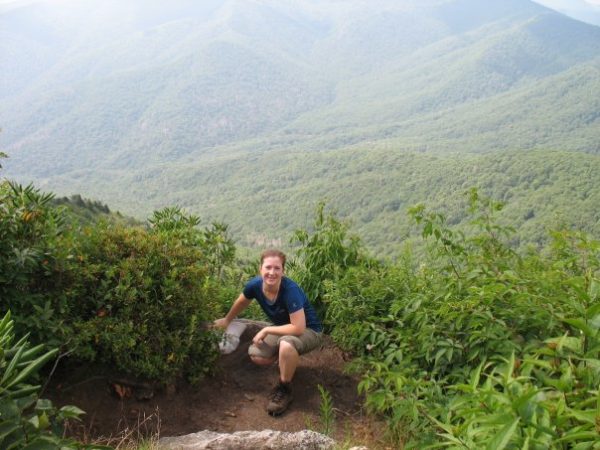
When you get overheated and sweat, your skin appears pinkish because the capillaries open up near the skin and release water and salts. As the sweat evaporates, it transfers internal heat from the core to the surface of your skin for rapid cooling. The blood near the skin’s surface becomes cooler as it releases your body’s heat into the air. This cooler blood then recirculates through the body.
The perspiration and evaporation process is the primary method used by the body to cool itself down; however, it is effective when sweat can evaporate. The rate at which water or sweat evaporates depends on how much moisture is in the air. “When relative humidity reaches a high enough level, the body’s natural cooling system simply can’t work. Sweat evaporates very slowly, if at all, and the body heats up. In extreme cases, people begin to suffer from heat cramps or heat stroke, which is basically organ failure as the body starts to cook itself.” [1] You don’t want that to happen. When the humidity is high, you will need to get smarter about staying cool.
Tips for staying cooler on the trail:
Staying Cool Tip#1: Transfer your Body Heat by Conduction
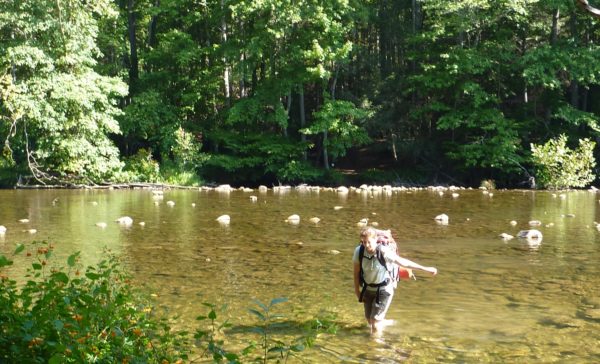
Conduction is the process of losing heat by making physical contact with another object or body. The basic idea is that there will be a transfer of energy from the hotter object (you) to the cooler object until the two reach the same temperature. You may experience this process when you lie down in the shade on the cold earth or sit on a cold rock. The heat is transferred from your body to the object which allows the body to cool itself. Your strategy is to find a cooler object to transfer your body heat.
- Keep in mind that hot air rises, and if you need to cool off quickly, it is best to get as low as possible by laying down on the ground, near water, or getting in the water. Generally, the earth (ground) stays cooler than the surrounding warm air.
Staying Cool Tip#2: Minimize Radiation by Finding Shade
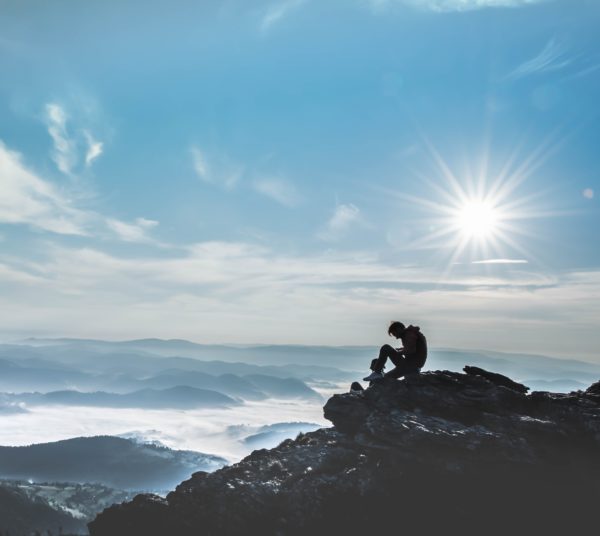
Sunbathing on a blistering hot day on a mountain summit in broad daylight will make your body work harder than it already does to stay cool. Laying in the sun heats your skin and clothes so much that it can make you sick. You need to take cover from the sun.
The posted temperatures from weather stations measure air temperature in the shade, so the shade doesn’t make the temperature cooler. Instead, solar radiation from sitting in direct sunlight will cause the air to feel 10 to 15 degrees warmer than it is. This is why finding shade is the obvious choice for staying cool. Shade can make the air feel much colder when compared to direct sunlight.
Make your own shade by carrying an umbrella. An umbrella is an excellent choice for hiking in the desert or open areas.
Umbrellas are also helpful for their intended use – staying dry. A torrential downpour on a hot summer afternoon often brings high winds and a rapid drop in temperature in subtropical climates. Here an umbrella can keep you warm and dry when you are caught in a rainstorm.
- An ordinary emergency poncho is worth carrying when an umbrella is not suitable. If you purchase a poncho, ensure the size covers you and your backpack. The advantage of a poncho is that it offers decent rain protection in a downpour and can be used for other (non-rain) purposes, such as a temporary rain shelter.
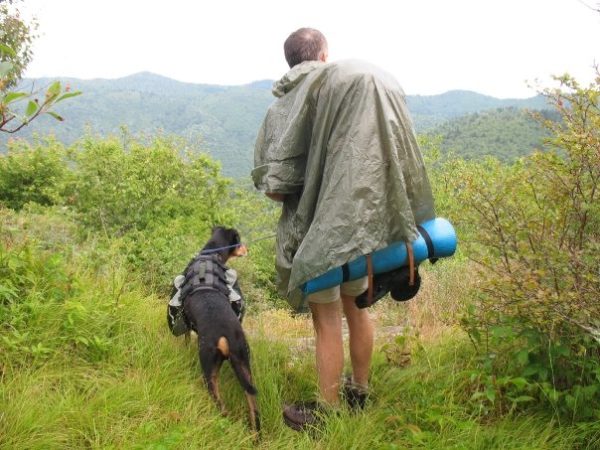
Staying Cool Tip#3: Wear Wicking Clothing
Wearing wicking clothing will speed up the process of evaporative cooling. Make sure it is loose or semi-fitted to allow for proper air circulation. For shirts, choose a waffle or honeycomb pattern, which allows for greater breathability and is faster drying.
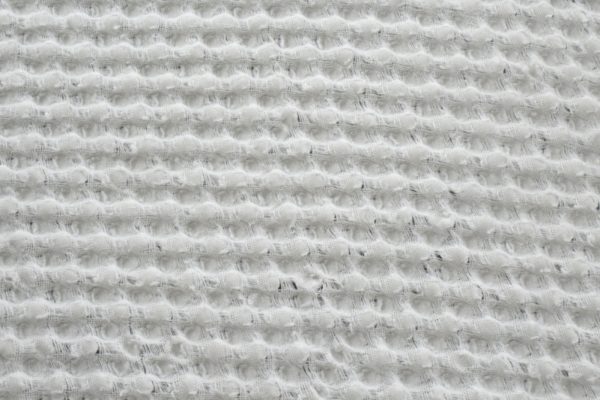
Staying Cool Tip#4: Hydrate
Among keeping you alive, drinking water also plays a critical role in regulating body temperature. The movement of water within your cellular system transports vital blood plasma. Water accounts for 92 percent of the volume of blood plasma. Without this delicate balance of water and plasma, your body would begin to overheat.
As you can see in the image below, most of your water intake is excreted by the skin during sweating.

Staying Cool Tip#5: Eat Curry & Drink Warm Beverages

Consuming a spicy curry or a hot soup such as chili may sound like a crazy choice when you are sweaty. However, there is a reason why some of the hottest countries in the world have some of the spiciest foods. That is because spicy foods cool you down by making you sweat. Although counterintuitive, warm beverages have the same effect as eating spicy foods. It causes receptors in your mouth and throat to trigger a sweat response to cool the body.
- After strenuous hiking in the heat, eat a meal containing carbohydrates and drink water. This will replace lost electrolytes from heaving sweating. Make sure not to overeat, though! Digesting a heavy meal leads to an increase in body temperature due to the metabolic process.
Staying Cool Tip#6: Remove your Sun Hat
Wide brim hats prevent sunburn and help keep insects from landing in your hair; however, hats can also contribute to overheating. The skin provides a very thin covering over the surface of the skull, and the concentration of blood vessels is relatively high. Consequently, significant heat loss is experienced through the head. Without adequate air circulation, you will not benefit from this heat loss.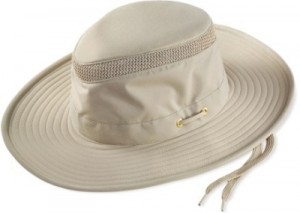
- In previous posts, we’ve mentioned our favorite hat, the Tilly LTM6 because it has mesh ventilation for improved airflow and will fold up easily to store in your backpack.
Staying Cool Tip#7: Splash Water on your Pulse Points
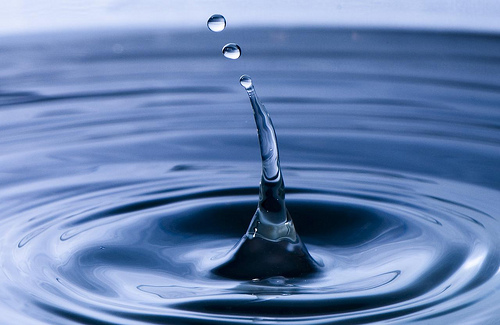
When you are near a water source, saturate your clothing and skin with water. Wetting a bandana or buff and placing it around your neck or head works well. Doing so will decrease your core body temperature as the water evaporates. When your clothes are sweaty (or wet), your loss of heat is increased 5 times. This works best on dry days when sweat can evaporate quickly.
- Keep in mind that humidity makes cooling less effective. Sweat on the skin or wet clothing will not cool you if it can’t evaporate quickly.
Article Sources: [1] MIT School of Engineering | » Why do we sweat more in high humidity?. (2017). MIT Engineering. Retrieved 1 July 2017, from https://engineering.mit.edu/engage/ask-an-engineer/why-do-we-sweat-more-in-high-humidity/